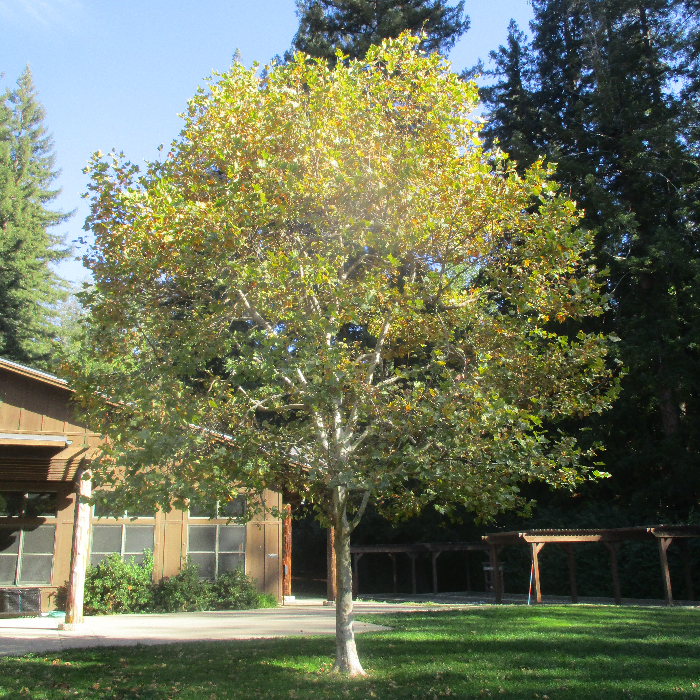UNITED STATES—Chimneys are easy to neglect. Some are external to the homes they serve. They occupy visible but minor garden space. Others are internal. Only portions that extend above their respective roofs are visible. Besides the use of accompanying fireplaces or woodstoves, they do not change with the seasons. Nonetheless, chimney clearance is very important.
Trees and vines often extend growth over the tops of chimneys. They grow most actively while chimneys are least active through spring and summer. Such growth is hazardously combustible within the exhaust of chimneys below. Essential chimney clearance pruning eliminates hazardous vegetation prior to the use of associated fireplaces or woodstoves.
Various eucalyptus, cypress, pine, cedar, juniper, fir, spruce, oak and bearded fan palms are very combustible. Deciduous oaks become less combustible as they defoliate during cooling weather though. Other deciduous vegetation is likewise less combustible by the time chimneys are most in use. Vines can accumulate debris directly on top of chimneys.
All serviceable chimneys require chimney clearance.
Vegetation within 10 feet of a chimney should generally be 2 feet below the top of the chimney or 15 feet above it. More combustible vegetation justifies more clearance or more vigorous grooming. Accumulated dry detritus is more hazardous than fresh foliage. Burning vegetation drops burning debris onto other combustible vegetation and material.
Of course, fireplaces, woodstoves and their associated chimneys are not as common as they were in the past. Most municipalities banned them from new construction during the past many years. Removal of chimneys that incur damage from earthquakes is generally more practical than repair. Chimney clearance becomes unnecessary without chimneys.
Furthermore, few surviving chimneys experience as much use as they did decades ago. Modern heating systems are much more practical and efficient. They generate no smoke to offend neighbors. They are unregulated by ‘no-burn’ alerts. Now that urbanization has replaced orchards and woodlands, firewood might be expensive from local tree services.
Highlight: London Plane
The parents of this unintentional hybrid are supposedly American sycamore and Oriental sycamore. No one really knows. London plane, Platanus X acerifolia, appeared within a private collection in London at the middle of the Seventeenth Century. It became popular there two centuries later, through the Victorian Era, because of its resilience to pollution.
Mature London plane trees might be taller than a 100 feet. Few here are old enough to be much taller than 60 feet though. Regardless, defoliation of such grand deciduous trees might be overwhelming through autumn. Foliar tomentum (fuzz) can be surprisingly irritating while raking too much foliage. Autumn color is unimpressively brownish yellow. The specific epithet ‘acerifolia’ translates to ‘maple foliage’, because the foliage resembles that of Norway maple.
London plane remains among the most common of street trees. It really is commendably adaptable to inhospitable urban situations. However, it is not perfect. Its roots eventually displace pavement. The foliar canopies can eventually grow disproportionately broad for compact urban parkstrips. For some people, the foliar tomentum can be a major allergen.
Tony Tomeo can be contacted at tonytomeo.com.






